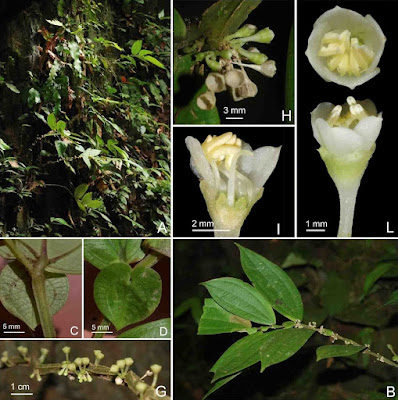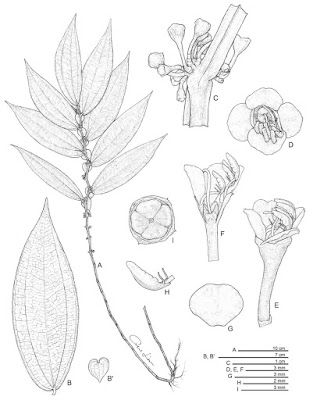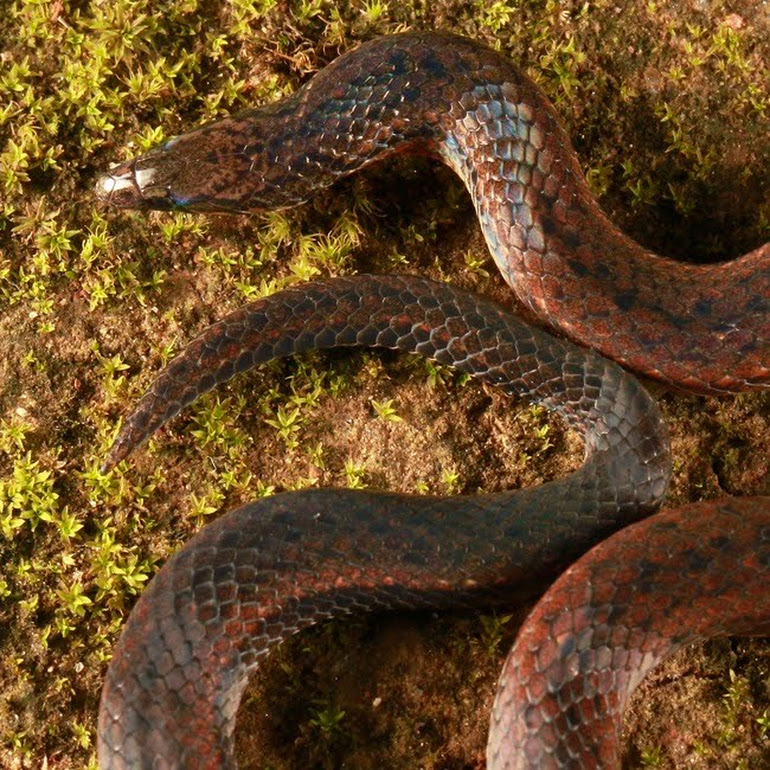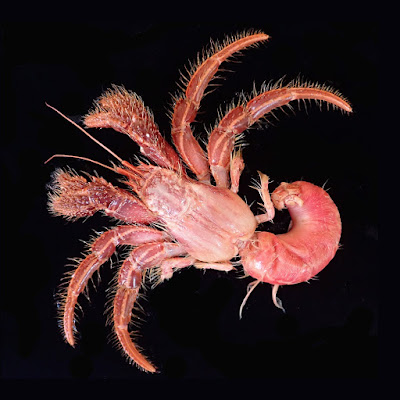[Most Recent Entries] [Calendar View]
Wednesday, February 20th, 2019
| Time | Event | ||||
| 2:05a | [Botany • 2019] Driessenia phasmolacuna (Sonerileae, Melastomataceae) • A New Species from Batang Ai, Sarawak, Borneo
Abstract A new species, Driessenia phasmolacuna C.W. Lin, from Batang Ai, southwestern Sarawak, is described and illustrated. It belongs to a distinct group of Driessenia that have subequal or unequal leaves in each pair, often congested cymose inflorescence with many tiny flowers. Morphologically, it is similar to D. sessiliflora, but differing in its stem being 4-winged (vs. wing absent), larger laminas 18–22 × 5–7 (vs. 13–14.5 × 3.7–5) cm, much longer pedicel 3–5 (vs. 0.1–0.5) mm long, shorter bracts ca. 0.3 (vs. 1–1.5) mm long, pedicel 3–5 (vs. 0.1–0.5) mm, petal white (vs. yellowish) and ovary subequal in length to hypanthium (vs. exceeding hypanthium by one fourth) in fruit. Detailed comparison of the new species with five phenetically similar species are also presented. Keyword: Borneo; Driessenia; Melastomataceae; New species; Sarawak; Sonerileae Driessenia phasmolacuna C.W. Lin, sp. nov. Diagnosis: Driessenia phasmolacuna resembles D. sessiliflora C. Hansen (1985: 340), differing in its 4- winged internodes (vs. wing absent), larger laminas 18– 22 × 5–7 (vs. 13–14.5 × 3.7–5) cm, much longer pedicel 3–5 (vs. 0.1–0.5) mm, shorter bracts ca. 0.3 (vs. 1–1.5) mm and ovary subequal in length to hypanthium (vs. exceeding hypanthium by one fourth) in fruit. ... Distribution and ecology: This new species is endemic to Sarawak, currently only known from Batang Ai (Fig. 3). It grows in lowland mixed dipterocarp forest, on semi-shaded sandstone cliffs at 100–250 m elevation. Etymology: Named after Lubok Antu, in Malay language which means ‘Ghost Pool’, where the new species was discovered. Che-Wei Lin. 2019. Driessenia phasmolacuna (Sonerileae, Melastomataceae), A New Species from Batang Ai, Sarawak, Borneo. Taiwania. 64(1); 69-73. DOI: 10.6165/tai.2019.64.69 | ||||
| 3:16a | [Herpetology • 2019] Aspidura desilvai • A New Species of Aspidura Wagler, 1830 (Squamata: Colubridae: Natricinae) from Knuckles, World Heritage Site, Sri Lanka
Abstract We describe a new species, Aspidura desilvai sp. nov., closely resembling A. trachyprocta and the last addition to the genus A. ravanai, from Knuckles massif, Matale District, of Sri Lanka. The species represents the ninth species of the genus known from Sri Lanka, and is readily distinguished from all other congeners by its colour pattern, the scale nature in the ischiadic region, and morphometric characteristics specially from its ratio between the snout to eye distance to its eye width. The species is currently known only from the type locality. Keywords: Reptilia, Aspidura ravanai, A. trachyprocta, central highlands, Knuckles, Roughside snakes, South Asia, systematics
Aspidura desilvai sp. nov. Etymology. The species is named in honor of Pilippu Hewa Don Hemasiri de Silva (Dr. P. H. D. H. de Silva), a former Director (1965-1981) of the National Museums of Sri Lanka. In recognition of his tireless services to the country, while in service and through his many publications specially as the author of the book titled “Snake Fauna of Sri Lanka, with special reference to skull, dentition and venom in snakes”. The species epithet desilvai is a noun in the genitive case. Suggested common names. desilvage madilla, and de Silva’s Rough-Side Snake in native Sinhala language and English language respectively. [මැඩිල්ලන්] L. J. Mendis Wickramasinghe, Imesh Nuwan Bandara, Dulan Ranga Vidanapathirana and Nethu Wickramasinghe. 2019. A New Species of Aspidura Wagler, 1830 (Squamata: Colubridae: Natricinae) from Knuckles, World Heritage Site, Sri Lanka. Zootaxa. 4559(2); 265–280. DOI: 10.11646/zootaxa.4559.2.3 | ||||
| 11:20a | [Crustacea • 2019] Clibanarius clibanarius (Herbst, 1791) • Redescription of the Little Known Hermit Crab (Decapoda: Anomura: Diogenidae), based on Material from southern India and Type Material
Abstract A little known littoral hermit crab, Clibanarius clibanarius (Herbst, 1791), is redescribed on the basis of material from southern India, supplemented by the photographs of the type material. The species appears closest to C. infraspinatus Hilgendorf, 1869, but the absence of a prominent ventral spine or protuberance on the cheliped meri immediately distinguishes C. clibanarius from C. infraspinatus. Although the species has been reported from wide areas in the Indo-West Pacific, records outside of India still needs to be verified. Keywords: Crustacea, Clibanarius infraspinatus, Kerala, specific identity Komai Tomoyuki, Rema Reshmi, Dwi Listyo Rahayu and Appukuttannair Biju Kumar. 2019. Redescription of the Little Known Hermit Crab, Clibanarius clibanarius (Herbst, 1791) (Decapoda: Anomura: Diogenidae), based on Material from southern India and Type Material. Zootaxa. 4555(3); 372–384. DOI: 10.11646/zootaxa.4555.3.6 |
| << Previous Day |
2019/02/20 [Calendar] |
Next Day >> |










